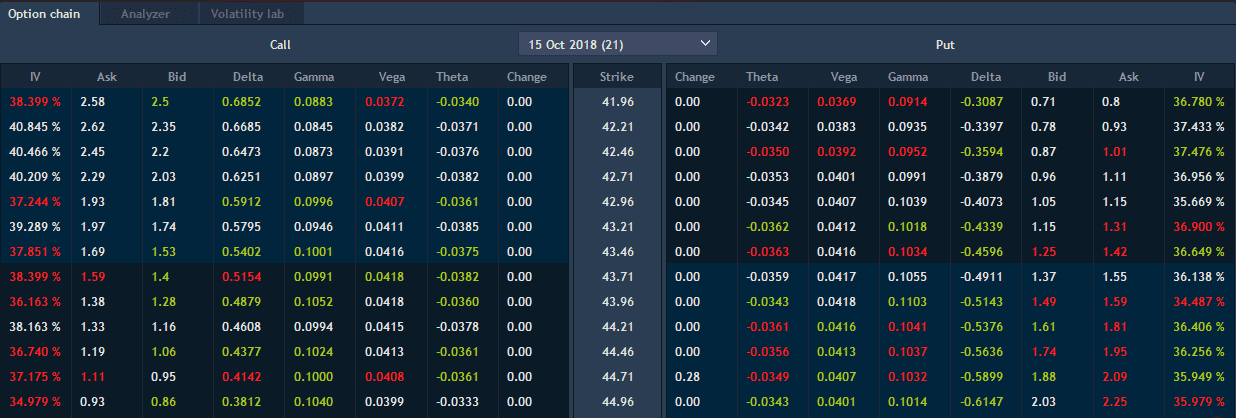As an investor, you’ve likely heard about the S&P 500 and the various ways to invest in it, such as through SPX and SPY options. But what are the key differences between these two investment vehicles, and how can understanding them help you make more informed decisions in your trading strategies? In this blog post, we’ll delve into the world of SPX vs SPY options, comparing their unique features and exploring how they can fit into your investing journey.
Key Takeaways
Comparing SPX and SPY is essential for informed investments, with different features like contract styles, settlement methods & tax treatments.
Understand the conversion formula between SPX and SPY to compare or balance out positions.
Real world examples can help you make decisions based on trading strategies & preferences.
Understanding SPX and SPY
Both SPX and SPY are related to the S&P 500 index, a stock market index that represents the performance of the 500 largest US companies by market capitalization. While they share a common origin, there are some important differences between SPX and SPY that can impact your investment decisions, making the “spy vs spx” comparison essential for informed decision-making.
For example, SPX is an index option, while SPY is an exchange-traded fund (ETF)
What is SPX?
The S&P 500 Index, or SPX as it is commonly known, is derived using the weighted average price of each of its component stocks. This ensures that more expensive stocks add a larger overall valuation than cheaper stocks. It’s a theoretical index that represents the overall performance of the 500 companies in the index and serves as a benchmark for the US stock market. However, SPX cannot be traded directly, which limits its usefulness for investors looking to gain exposure to the S&P 500 index.
Rather than trading SPX directly, investors have the option to trade SPX options. These derivative contracts directly track the S&P 500 Index. By trading SPX options, investors can take advantage of European-style contracts, meaning they can only be exercised at expiration, and they do not pay dividends.
What is SPY?
Unlike SPX, SPY is an exchange-traded fund (ETF) that tracks the S&P 500 index and can be bought and sold on the stock market. Comprised of stocks from the 500 companies in the S&P 500 index, SPY offers an accessible way for investors to gain exposure to the performance of these companies.
Besides investing in the SPY ETF itself, trading SPY options is another avenue available to investors. These options are American-style contracts, meaning they can be exercised at any time before expiration. They involve the transfer of the underlying asset, the SPDR S&P 500 ETF Trust, upon exercise. Each SPY option contract is equal to 100 shares of the underlying asset and has its own strike price and expiration date.
Options Trading Basics

Options trading utilizes contracts, giving the holder the privilege, but not the duty, to purchase or sell an underlying asset at a predetermined price before a certain expiration date. Trading options can be a valuable strategy for investors looking to diversify their portfolios.
Options come in two primary forms: call options, which grant the holder the right to purchase the asset, and put options, which provide the holder the right to sell the asset.
Call Options
Call options grant the holder the right to buy an asset at a specified price, known as the strike price, before the option contract expires. Buying a call option creates a bullish position, as the holder expects the price of the underlying asset to rise and wants to profit from the price appreciation.
For instance, a SPY call option would endow the holder with the right to acquire the SPY ETF at the agreed-upon strike price before the expiration date. If the market price of SPY rises above the strike price, the call option holder can profit from the difference between the market price and the strike price, multiplied by the number of shares in the option contract.
Related Article: Call Options Explained
Put Options
Put options, on the other hand, grant the holder the right to sell an asset at the specified strike price before the contract expires. Buying a put option creates a bearish position, as the holder expects the price of the underlying asset to decline and wants to profit from the price depreciation.
For example, with a SPY put option, the holder acquires the right to sell the SPY ETF at the agreed strike price prior to the expiration date. If the market price of SPY falls below the same strike price, the put option holder can profit from the difference between the strike price and the market price, multiplied by the number of shares in the option contract.
Related Article: Put Options Explained
SPX vs. SPY Options: Key Differences

While both SPX and SPY options are tied to the S&P 500 index, there are some key differences in their contract styles, settlement methods, and tax treatments that can impact your investment decisions.
SPX options are European-style contracts, meaning they can only be exercised on the expiration
Contract Styles
SPX options are European-style contracts, as mentioned earlier. This means that these options can only be exercised on expiration day. This makes them less flexible than American-style contracts, such as SPY options, which can be exercised at any time before expiration. The distinction in contract styles can impact the trading strategies and preferences of investors, as European-style options may be more suitable for those who do not require the flexibility of early exercise.
On the other hand, SPY options are American-style contracts, offering more flexibility for the option holder. This can be advantageous for investors who want to take advantage of price movements in the underlying asset or to close their position early to lock in profits or minimize losses.
Settlement Methods
Another key difference between SPX and SPY options lies in their settlement methods. SPX options are cash-settled, meaning that the holder receives a cash payment upon exercise, rather than the transfer of any underlying asset. This can be more convenient for investors, as there is no need to deal with the actual transfer of the underlying asset, which can be time-consuming and costly. The settlement price plays a crucial role in determining the cash payment received.
In contrast, SPY options involve the transfer of the underlying asset, the SPDR S&P 500 ETF Trust, upon exercise. This means that the holder of a SPY option will receive or deliver the actual ETF shares when the option is exercised, and they must be prepared to deal with the logistics and costs associated with the transfer of these shares.
Tax Treatments
Tax treatments for SPX and SPY options also differ, with SPX options having a more favorable tax treatment compared to SPY options. Gains from SPX options are treated as 60% long-term capital gains and 40% short-term capital gains, regardless of the holding period. This blended tax rate can be advantageous for investors, as long-term capital gains tax rates are generally lower than short-term rates.
In contrast, gains from SPY options are taxed based on the holding period of the option. Short-term gains, from options held for less than a year, are taxed at the investor’s ordinary income tax rate, which can be higher than the blended rate applied to SPX options. This difference in tax treatment can impact the overall profitability of the investment and should be considered when deciding between SPX and SPY options.
| Option Type | Holding Period | Tax Treatment |
|---|---|---|
| SPX | Any | 60% long-term capital gains, 40% short-term capital gains |
| SPY | Less than one year | Short-term capital gains (ordinary income) |
| SPY | More than one year | Long-term capital gains |
Trading Strategies and Considerations

During the trade of SPX and SPY options, it is important to take into account factors like liquidity, investment costs, and risk management. These factors can influence your trading strategies and preferences, ultimately affecting the success of your investments.
Liquidity
Liquidity refers to how easily options contracts can be bought and sold in the market. Generally speaking, SPY options outshine SPX options in terms of liquidity, thus offering better accessibility for traders and investors. High liquidity can be advantageous, as it allows for faster and more efficient trade execution, with minimal impact on the price of the options.
In addition, the higher liquidity of American-style contracts like SPY options can provide more opportunities for profit-taking and risk management, as the ease of trading these options allows for more efficient entry and exit of positions. On the other hand, the lower liquidity of European-style contracts like SPX options may be more suitable for investors who prioritize the cash-settlement feature and are less concerned with the ease of trading.
Investment Costs
Due to their larger contract size, SPX options carry a heftier price tag than SPY options, necessitating a bigger initial investment. This can be a crucial factor for investors with limited capital, as the higher cost of SPX options may make them less accessible and more difficult to trade efficiently.
On the other hand, SPY options are significantly cheaper than SPX options with the same parameters, making them more accessible and affordable for a wider range of investors. This lower cost can also provide more flexibility in trading strategies, as it allows investors to create more diversified portfolios and manage risk more effectively with spy and spx options.
Risk Management
Risk management is a vital component of options trading, serving to safeguard your investment and optimize potential gains. In the case of SPY options, early assignment risk is an important factor to consider. This risk arises from the American-style nature of SPY options, which allows holders to exercise their options before the expiration date.
To manage the risk of early assignment, traders can employ various strategies, such as hedging, diversifying, and limiting exposure. By adopting a comprehensive risk management approach, investors can better protect their investments and navigate the challenges of trading SPY options.
SPX to SPY Conversion Formula
Grasping the conversion formula between SPX and SPY is beneficial for investors aiming to juxtapose the two investment avenues or hedge their positions in one against the other. The conversion formula is straightforward: SPX = 10 x SPY; SPY = SPX/10.
This means that if the SPX value is 4,000, the corresponding SPY value would be 400.
Real-World Examples and Scenarios
For a clearer understanding of the differences between SPX and SPY options, let’s contemplate two hypothetical scenarios involving investors, Alice and Bob. Alice is an investor with a larger capital base who prefers cash-settlement and is comfortable with the European-style nature of SPX options. She opts for SPX options and takes advantage of their more favorable tax treatment to maximize her profits.
On the other hand, Bob has a smaller capital base and is looking for more flexibility in his options trading. He chooses SPY options, as they are more affordable and offer the advantages of American-style contracts, such as the ability to exercise the options before expiration.
By understanding the key differences between SPX and SPY options, both Alice and Bob can make informed decisions that align with their trading strategies and preferences.
Summary
In conclusion, while both SPX and SPY options are related to the S&P 500 index, they have key differences in contract styles, settlement methods, and tax treatments that can impact investment decisions. By understanding these differences, investors can choose the option that best aligns with their trading strategies, preferences, and financial goals. As with all investment decisions, it’s essential to consider factors such as liquidity, investment costs, and risk management, ensuring a well-informed and successful investing journey.
Frequently Asked Questions
Why use SPX instead of SPY?
SPX offers larger per-contract position sizes and more hours of trading than SPY, while potentially offering more beneficial tax implications. Therefore, it is often more attractive for traders to use SPX instead of SPY.
Is SPX the same as SPY?
No, SPX and SPY are not the same. SPX is based on a theoretical index, whereas SPY is an ETF with a portfolio of dividend-bearing stocks. Therefore, SPY options are able to pass dividends to investors, while SPX options cannot.
What is the difference between S&P 500 and S&P 500 ETF?
The main difference between an S&P 500 ETF and an S&P 500 index fund is that an ETF trades like a stock on the exchange and typically has no minimum investment amount, while a mutual fund requires a minimum investment and can only be traded at the end of each trading day.
Is SPX a safe investment?
Based on academic research, the S&P 500 is a generally safe investment with occasional drawdowns – making it a great choice for long-term investing.
How do you convert SPX to SPY and vice versa?
To convert SPX to SPY, you need to multiply SPX by 10. To convert SPY to SPX, divide SPY by 10.




